Distributions
Introduction
Suitable distribution for the response variable.
different types of distributionsproperies of distributionsdistributions in GAMLSS- explicit
- implicit
a procedure to find a good initial distribution for the response
distributions
Types
continuous
- \((-\infty, \infty)\),
real line; - \((0, \infty)\),
positive real line; - \((0,1)\) from 0 to 1
- \((-\infty, \infty)\),
discrete
- \((0,1,\dots, \infty)\)
- \((0,1,\dots, N)\)
mixed part continuous part discrete
- \([0, \infty)\) zero adjusted
- \([0, 1]\) zero (and 1) inflated
continuous
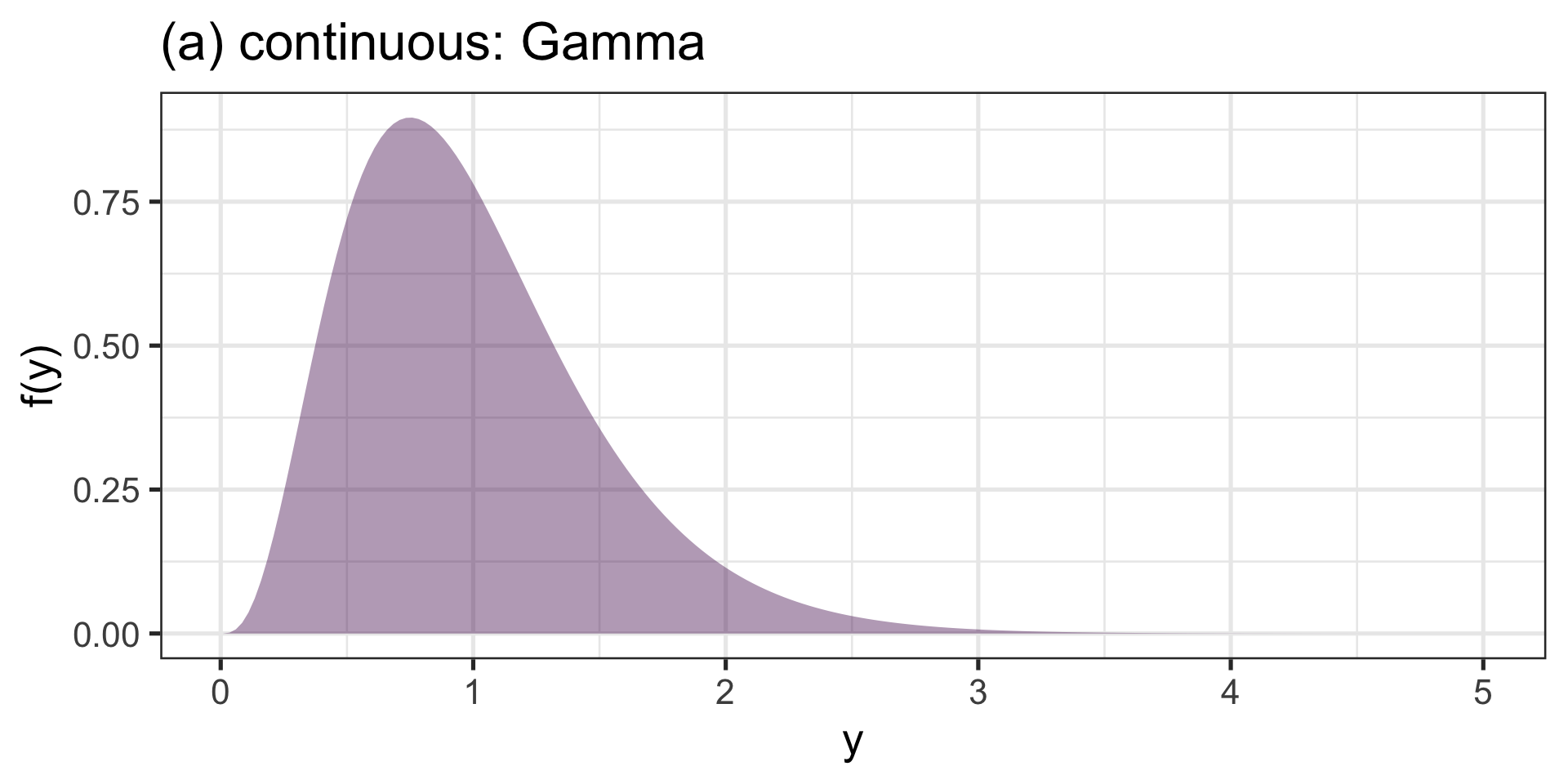
(a) continuous
discrete
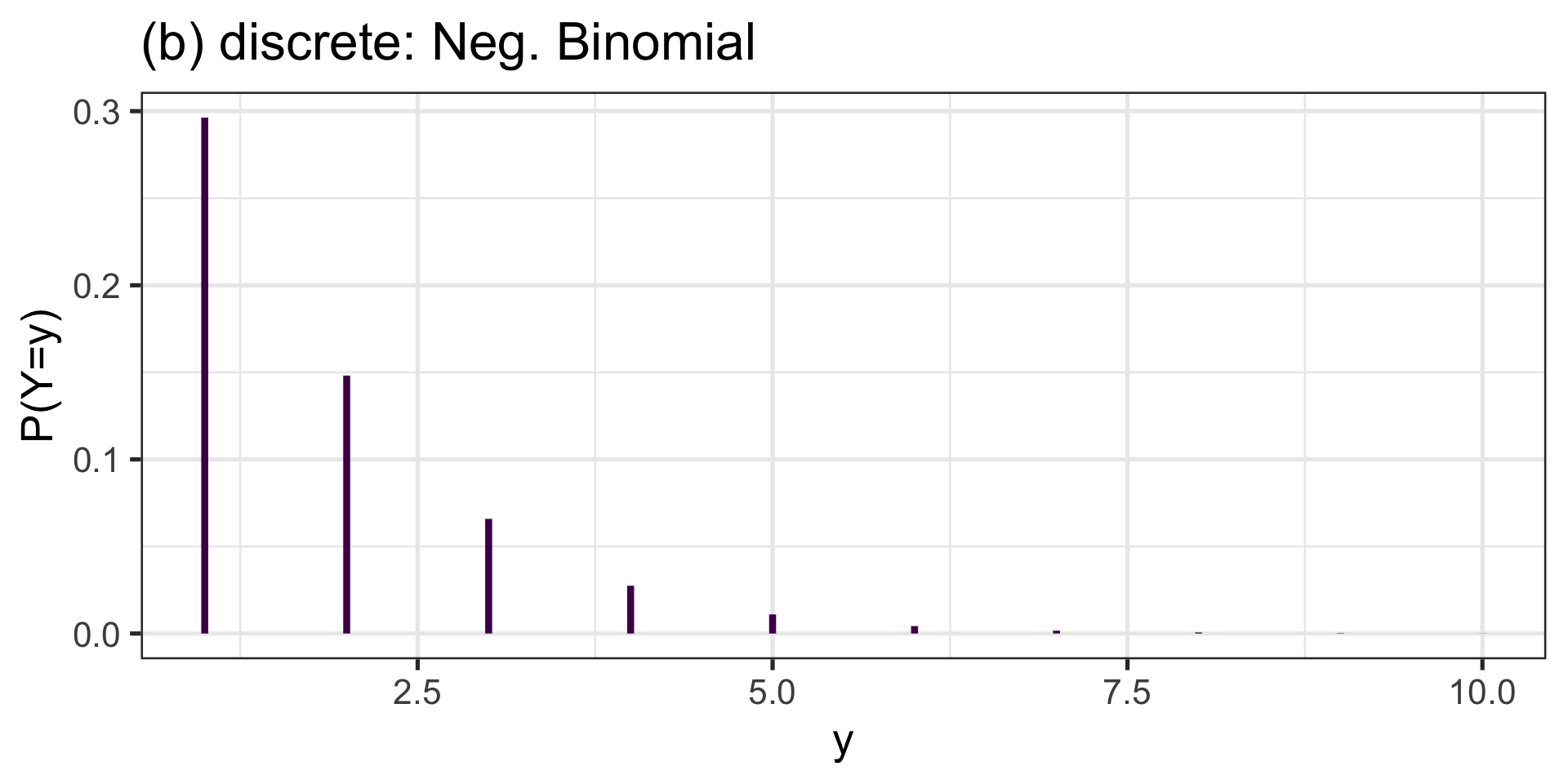
(a) discrete
mixed
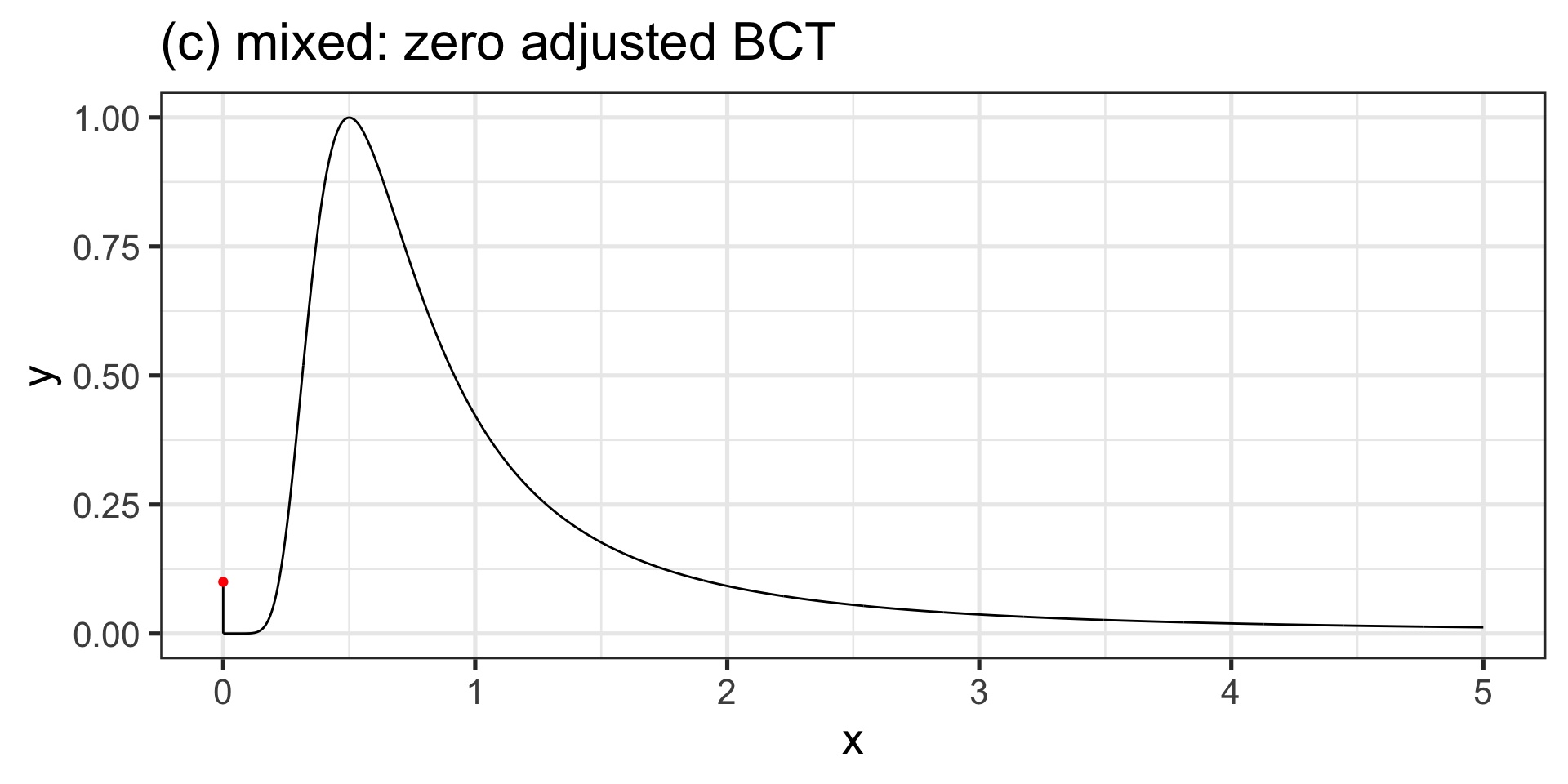
(a) mixed
properties
\(f(y;{\theta})\)
\(\int_{R_Y} f(y) \; dy=1\)
\(\sum_{y\in R_Y} f(y)=\sum_{y \in R_Y} P(Y=y)=1\)
\(\int_{R_{1}} f(y)\, dy + \sum_{y \in R_{2}} f(y) = 1\).
parameters
\(f(y;{\theta})\)
\({\theta}= (\theta_1, \theta_2, \ldots, \theta_k)\).
locationscaleshape- skewness
- kurtosis
left skew

(a) left skew
symmetric
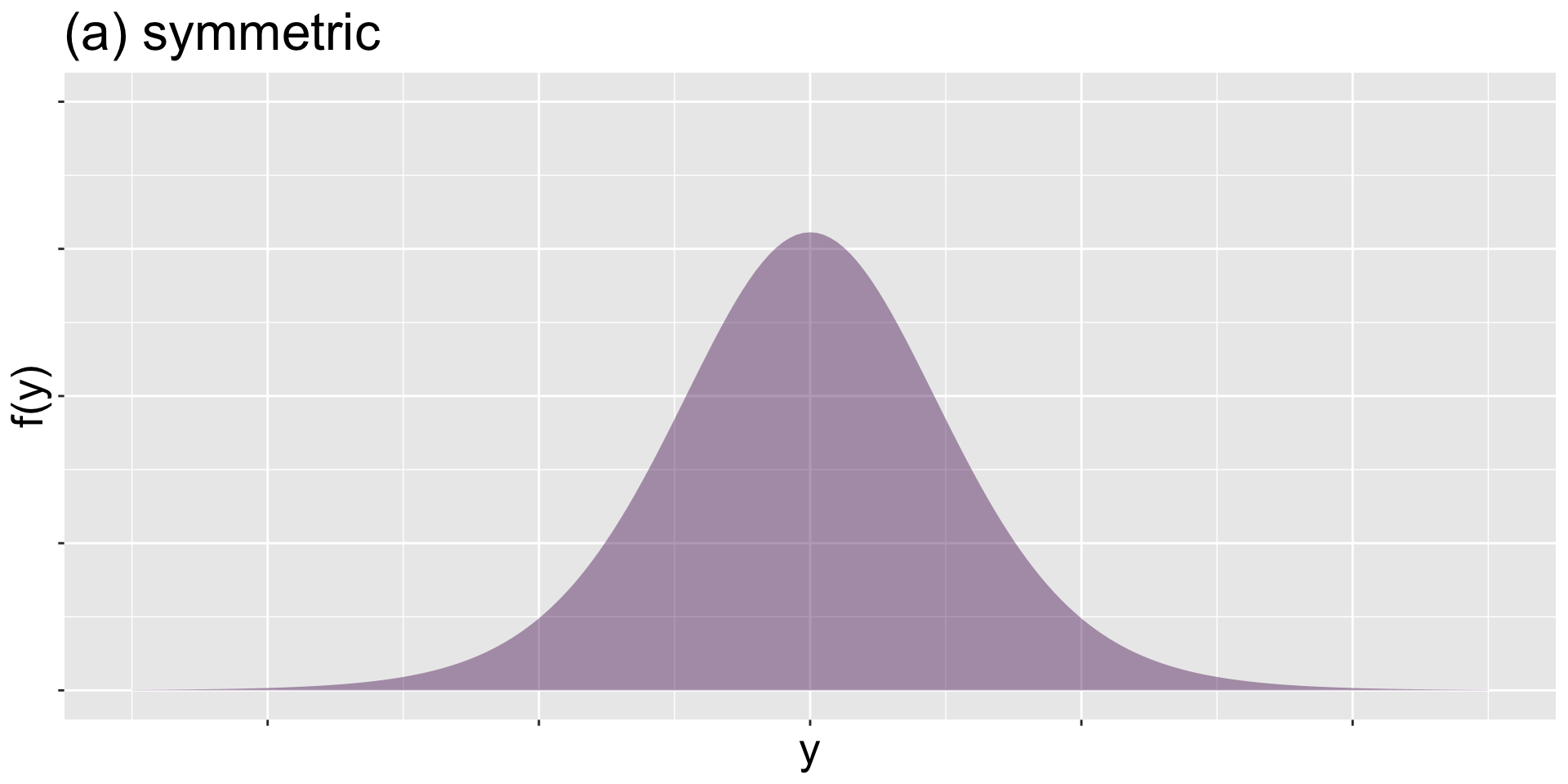
(a) symmetric
right skew
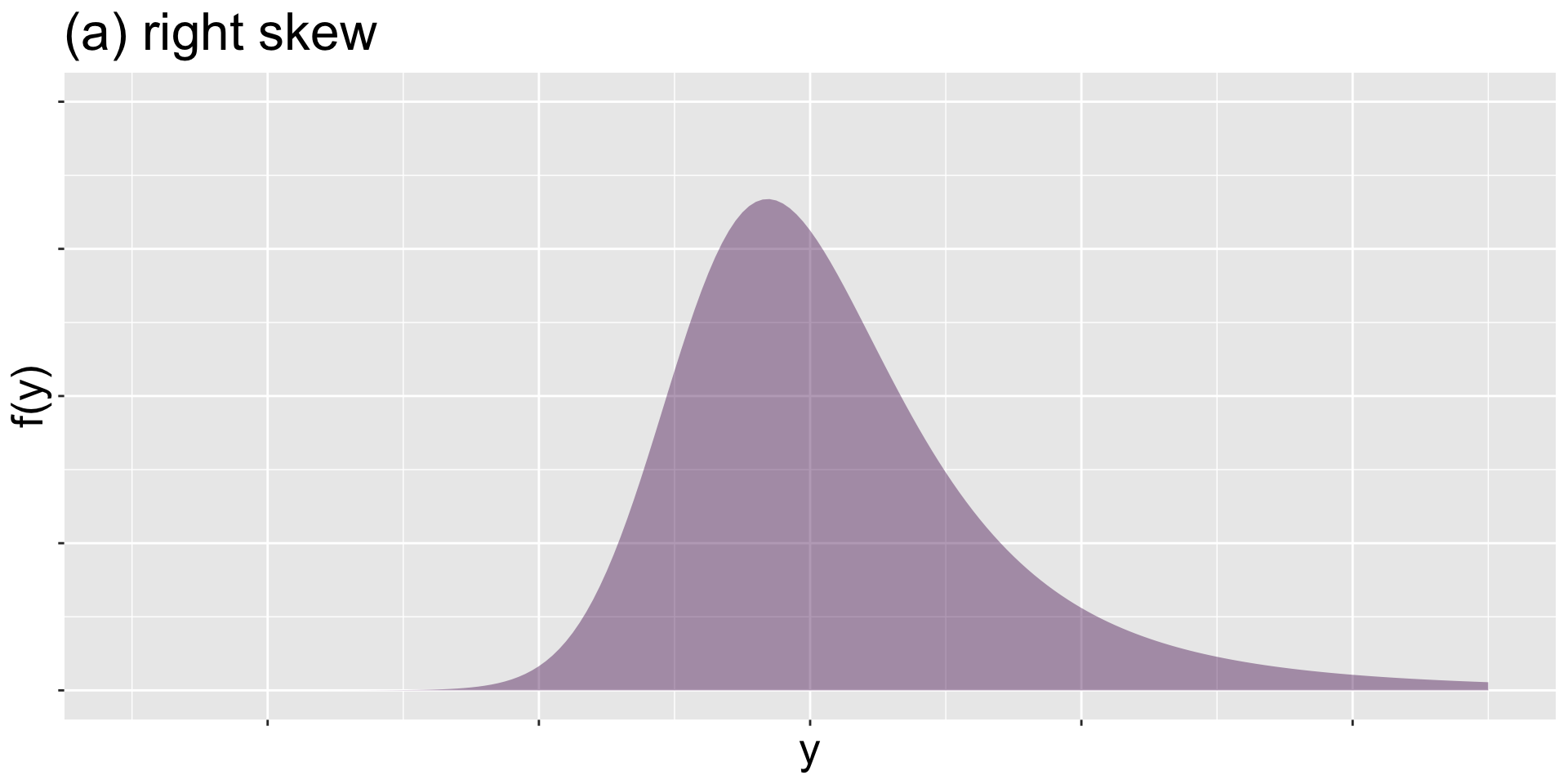
Figure 6: right skew
platy
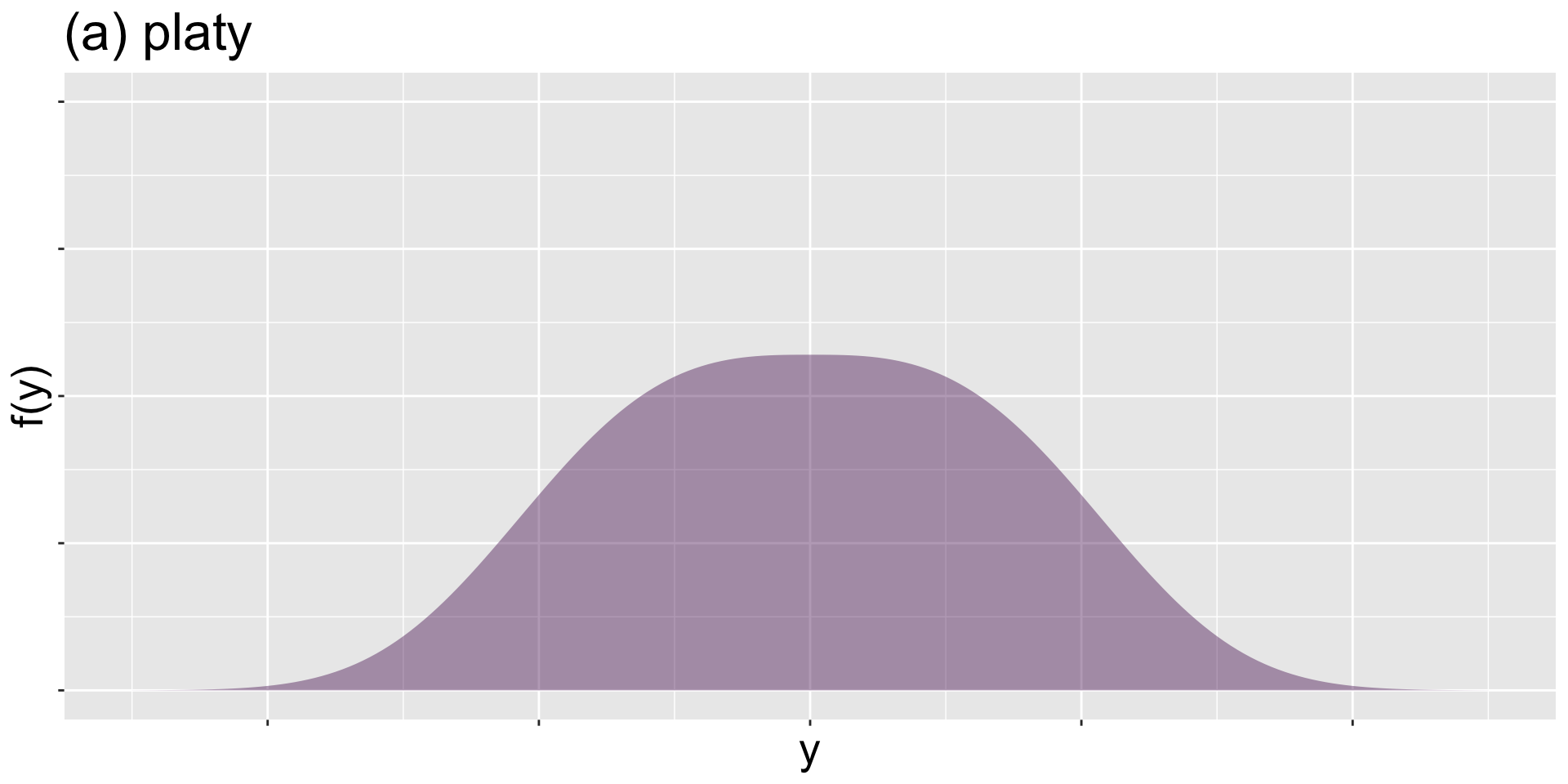
(a) platy
meso
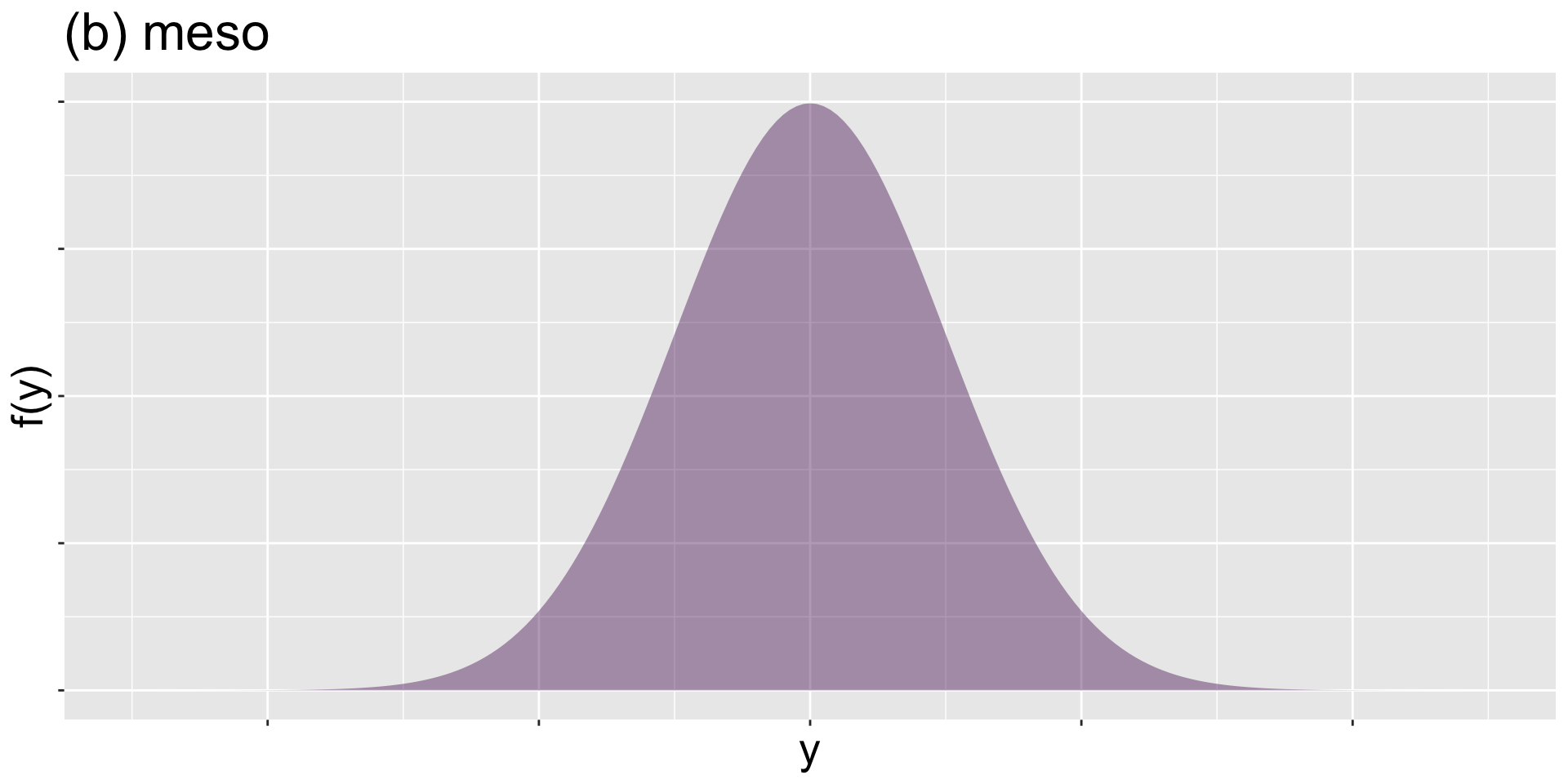
Figure 8: meso
lepto
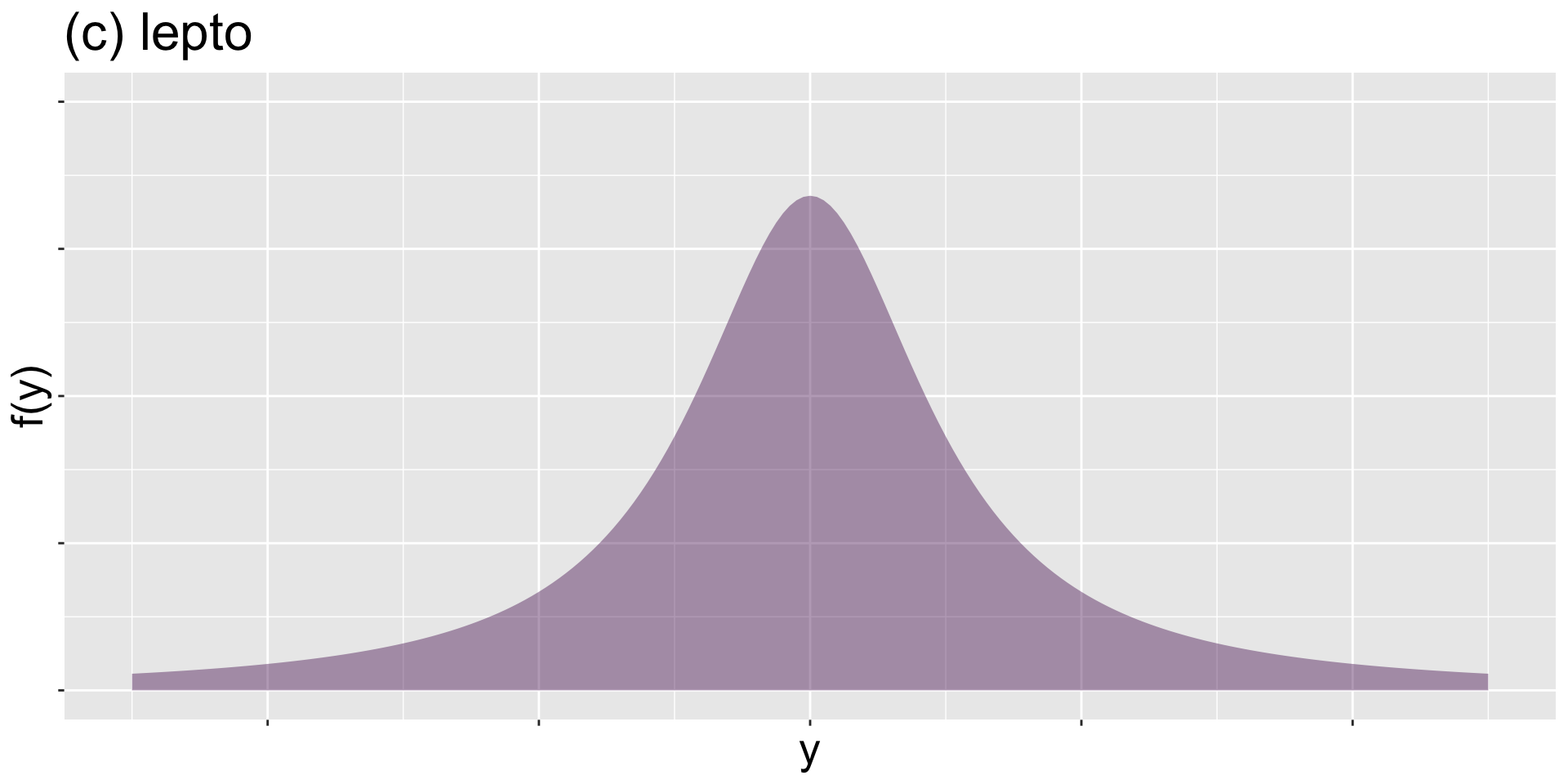
Figure 9: lepto
moments based characteristics
mean \[\begin{align*} E(Y)= \begin{cases} \int_{-\infty}^{\infty} y f(y)\, dy&\text{for continuous}\\ \sum_{y \epsilon R_Y} y\, P(Y=y) &\text{for discrete} \end{cases} \end{align*}\]
variance
coefficient of skewness
(adjusted) coefficient for kurtosis
mean
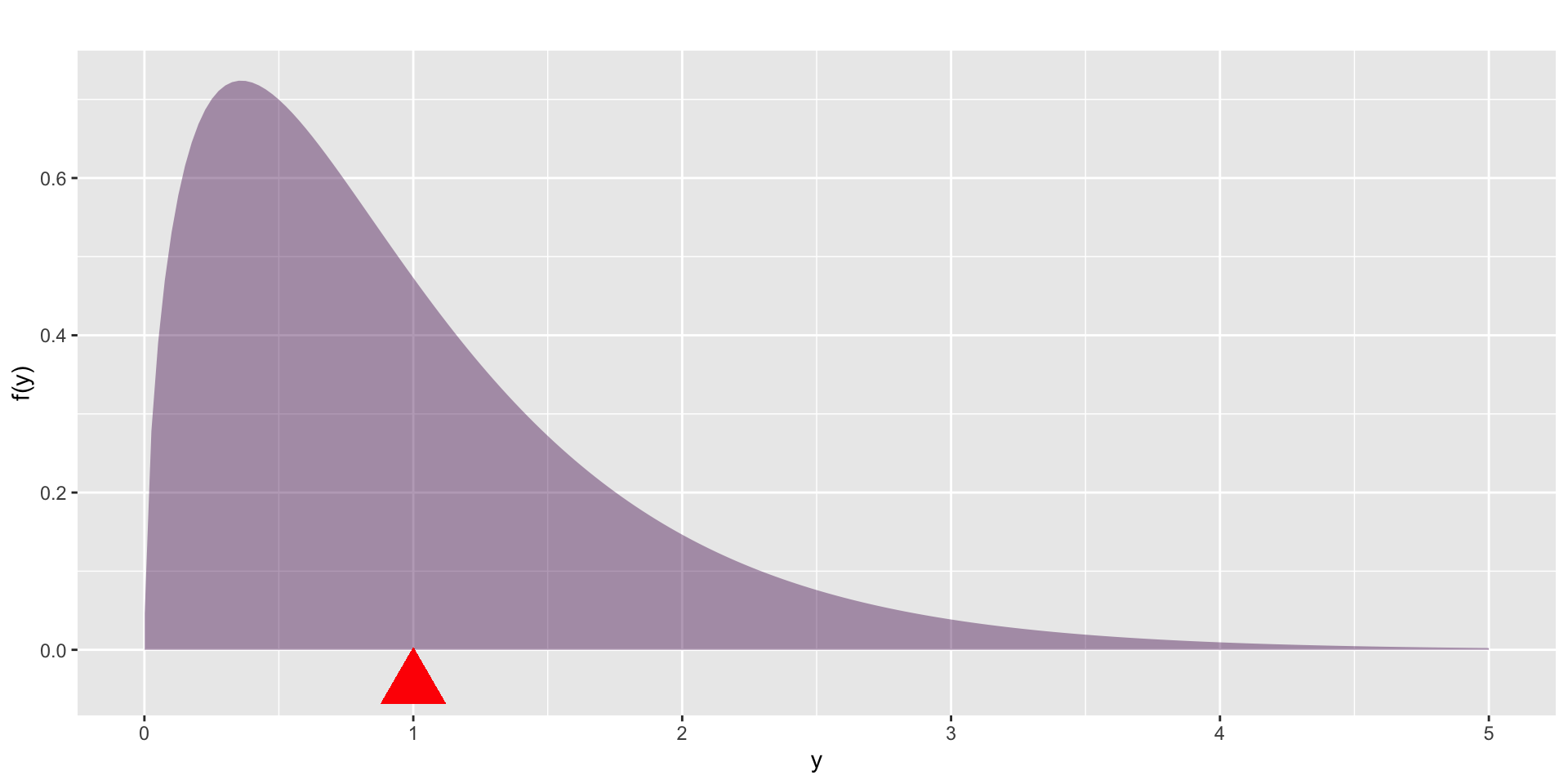
Figure 10: The mean is the point in which the distribution is balance.
centile based characteristics
the median
semi interquartile range
centile skewness
centile kurtosis
quantiles
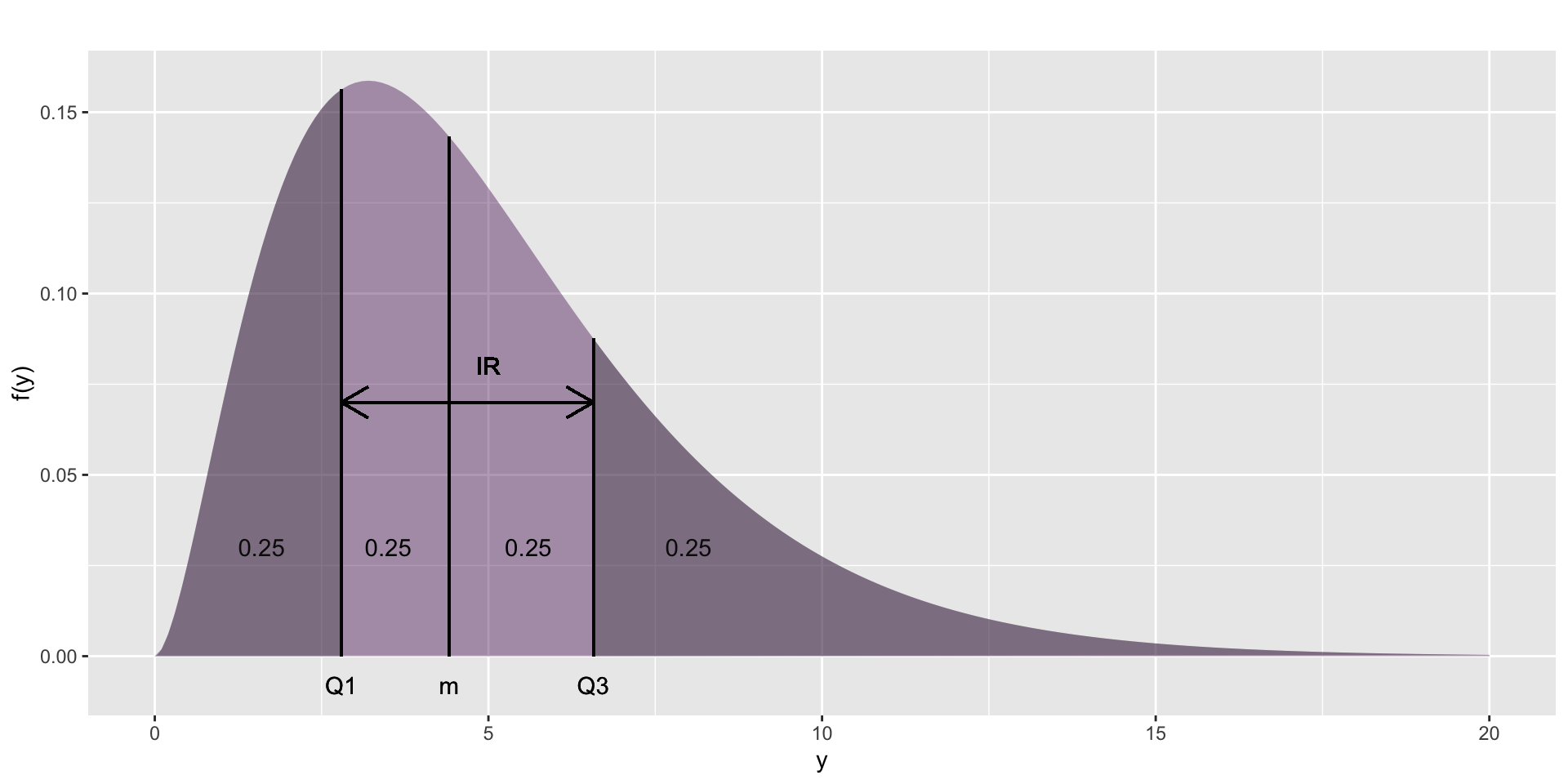
Figure 11: Showing how \(Q1\), \(m\) (median), \(Q3\) and the interquartile range IR of a continuous distribution are derived from \(f(y)\).
The GAMLSS families
over 100
explicitdistributionsimplicitdistributions- truncation
- log distributions
- logit distribution
- inflated distributions
- zero adjusted
- generalised Tobit
explicit distributions
dprobability density functions (pdf)pcumulative density functions (cdf)qthe q-function or inversed cumulative density functions (icdf)rrandom generating functionfitting function
- first and second devivative of the log-likelihood
- other information like names of parameters, range of the response a of the parameters e.t.c.
continuous




with ggplot2



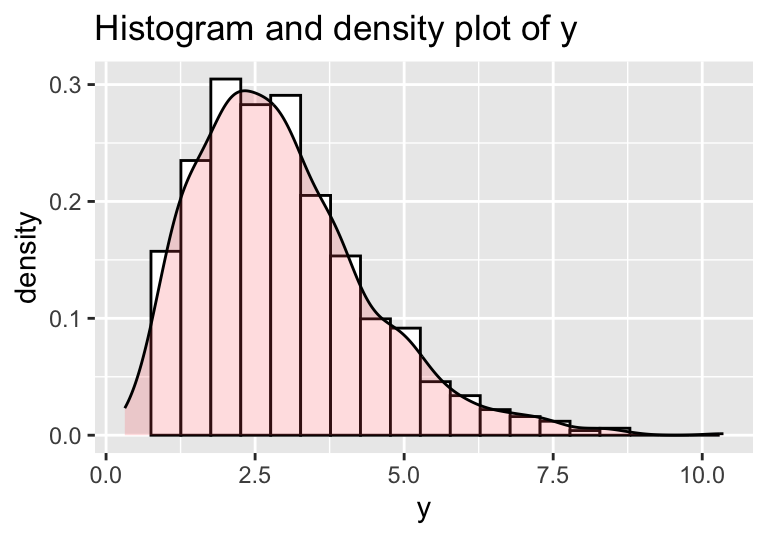
discrete



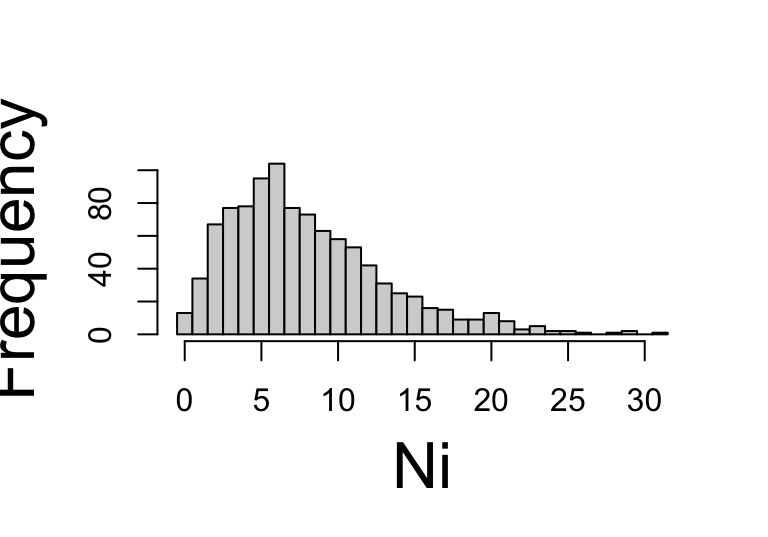
with ggplot2



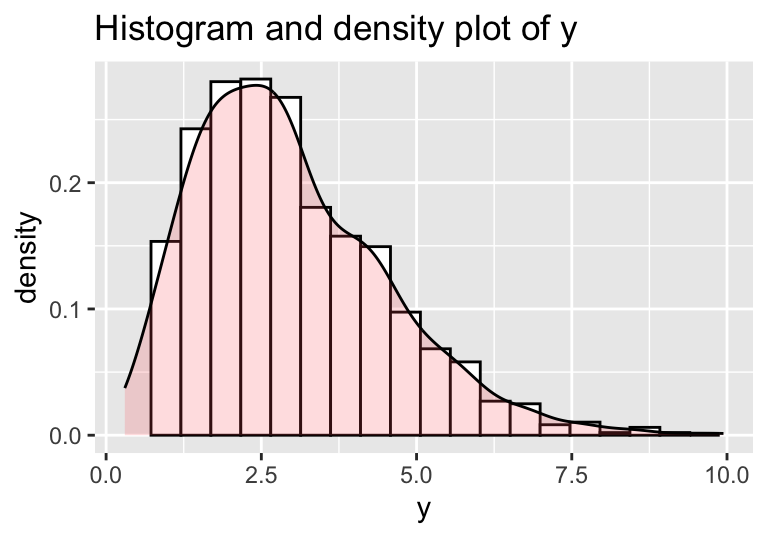
demo
implicit distributions
truncated distributions
Any distribution can be truncated
– to the
left– to the
rightor– in
bothsides
truncated continuous
A truncated family of distributions from NO has been generated
and saved under the names:
dNOtr pNOtr qNOtr rNOtr NOtr
The type of truncation is both
and the truncation parameter is 0 3 1 with absolute error < 1.1e-14
truncated discrete
A truncated family of distributions from NBI has been generated
and saved under the names:
dNBItr pNBItr qNBItr rNBItr NBItr
The type of truncation is left
and the truncation parameter is 0 
Transformation from \((-\infty, \infty)\) to \((0, +\infty)\)
Any distribution for \(Z\) on \((-\infty, \infty)\) can be transformed to a corresponding distribution for \(Y=\exp(Z)\) on \((0, +\infty)\)
For example: from t distribution to \(\log t\) distribution
log distributions

log distributions (con)
A log family of distributions from TF has been generated
and saved under the names:
dlogTF plogTF qlogTF rlogTF logTF 
Transformation from \((-\infty, \infty)\) to \((0, 1)\)
Any distribution for \(Z\) on \((-\infty, \infty)\) can be transformed to a corresponding distribution for \(Y=\exp(Z)\) on \((0, 1)\)
For example: from
tdistribution tologit tdistribution
logit distributions

logit distributions (con)
A logit family of distributions from TF has been generated
and saved under the names:
dlogitTF plogitTF qlogitTF rlogitTF logitTF 
inflated distributions
A logit family of distributions from SHASHo has been generated
and saved under the names:
dlogitSHASHo plogitSHASHo qlogitSHASHo rlogitSHASHo logitSHASHo A 0to1 inflated logitSHASHo distribution has been generated
and saved under the names:
dlogitSHASHoInf0to1 plogitSHASHoInf0to1 qlogitSHASHoInf0to1 rlogitSHASHoInf0to1
plotlogitSHASHoInf0to1 
zero adjusted
A zero adjusted BCT distribution has been generated
and saved under the names:
dBCTZadj pBCTZadj qBCTZadj rBCTZadj
plotBCTZadj 
TOBIT
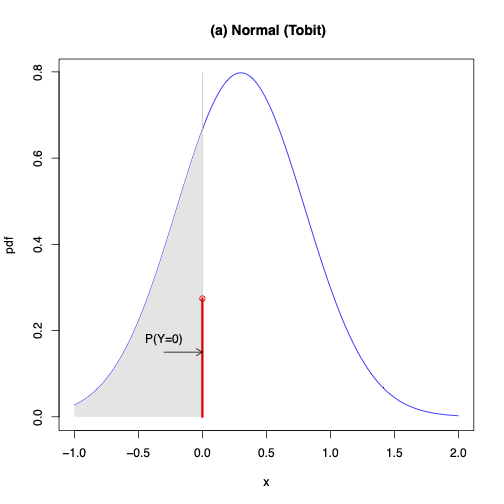
generalized TOBIT
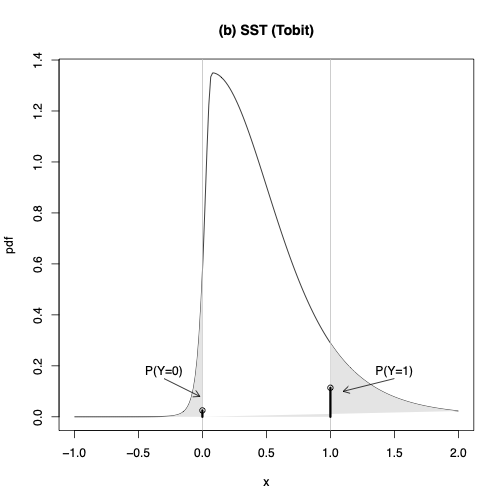
book 2

book2
end

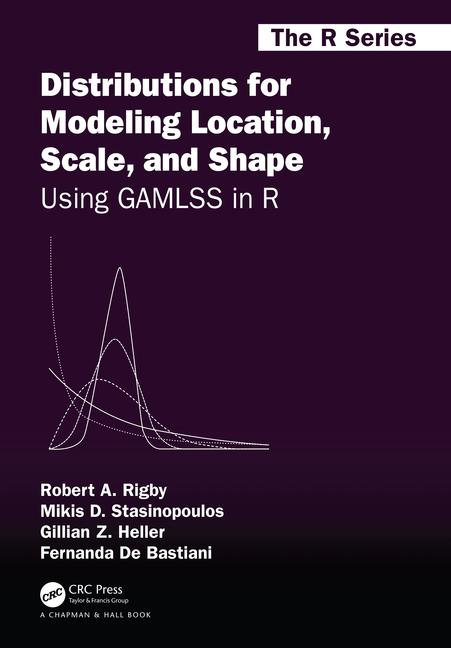
 The Books
The Books

www.gamlss.com